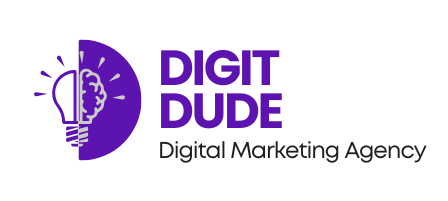As a small or medium-sized business owner, you’re probably well aware that digital marketing is essential for growth in today’s online-driven world. However, navigating the complex landscape of digital marketing can be challenging, especially when you’re juggling multiple responsibilities. It’s easy to fall into common traps that can hinder your success. In this blog post, we’ll explore five critical digital marketing mistakes that SMBs often make and provide practical advice on how to avoid them.
Neglecting to Define a Clear Target Audience
One of the most common pitfalls for SMBs is casting too wide a net when it comes to their target audience. I’ve seen countless businesses waste valuable resources trying to appeal to everyone, only to end up resonating with no one.
Picture this: You’re at a networking event, and someone asks you about your business. Would you give the same pitch to a 20-something tech enthusiast as you would to a 50-year-old business executive? Probably not. The same principle applies to your digital marketing efforts.
How to avoid this mistake:
- Create detailed buyer personas based on demographic data, interests, and pain points
- Use analytics tools to understand your website visitors and social media followers
- Tailor your content and messaging to address the specific needs of your target audience
Remember, it’s better to be a big fish in a small pond than a small fish in the ocean. By focusing your efforts on a well-defined target audience, you’ll see better engagement and higher conversion rates.
Inconsistent Branding Across Digital Channels
In the digital realm, your brand is often the first point of contact with potential customers. Inconsistent branding across different platforms can leave your audience confused and uncertain about your business’s identity.
Think about it: If you met someone who constantly changed their personality and appearance, wouldn’t you find it hard to trust them? The same goes for your brand online.
How to avoid this mistake:
- Develop a comprehensive brand style guide that includes logo usage, color palette, typography, and tone of voice
- Ensure all team members have access to and understand the brand guidelines
- Regularly audit your digital presence to maintain consistency across all platforms
Consistent branding builds trust and recognition. When your audience encounters a cohesive brand experience across all touchpoints, they’re more likely to remember and choose your business over competitors.
Ignoring the Power of Content Marketing
Many SMBs make the mistake of focusing solely on promotional content, neglecting the value of informative and engaging content that addresses their audience’s needs and interests.
Imagine walking into a store where the salesperson immediately starts pushing products on you without first understanding your needs or building rapport. Annoying, right? That’s how your audience feels when all they see is promotional content.
How to avoid this mistake:
- Develop a content strategy that balances promotional and value-driven content
- Create a content calendar to ensure consistent posting
- Experiment with different content formats (blog posts, videos, infographics, podcasts) to engage your audience
Here’s a simple content mix table to help you strike the right balance:
| Content Type | Frequency | Purpose |
|---|---|---|
| Educational | 40% | Inform and build authority |
| Entertaining | 30% | Engage and build community |
| Promotional | 20% | Showcase products/services |
| User-generated | 10% | Build trust and social proof |
Remember, content marketing is about playing the long game. By consistently providing value to your audience, you’ll build trust, establish authority in your niche, and ultimately drive more conversions.
Neglecting Mobile Optimization
In our increasingly mobile-first world, it’s shocking how many SMBs still haven’t optimized their digital presence for mobile devices. If your website or email campaigns aren’t mobile-friendly, you’re likely losing a significant portion of your potential customers.
Imagine trying to read a newspaper through a keyhole. Frustrating, right? That’s how users feel when they encounter a non-mobile-optimized site on their smartphones.
How to avoid this mistake:
- Implement a responsive design for your website
- Test your emails on various mobile devices before sending
- Optimize your content for mobile consumption (short paragraphs, clear headings, easily tappable buttons)
Mobile optimization isn’t just about looking good on smaller screens; it’s about providing a seamless user experience that encourages engagement and conversions.
Failing to Track and Analyze Marketing Efforts
Last but certainly not least, many SMBs fall into the trap of implementing various digital marketing strategies without properly tracking their effectiveness. Without data-driven insights, you’re essentially flying blind.
It’s like trying to lose weight without ever stepping on a scale or taking measurements. How would you know if your efforts are paying off?
How to avoid this mistake:
- Set up Google Analytics (or a similar tool) to track website performance
- Use UTM parameters to track the effectiveness of your campaigns across different channels
- Regularly review key performance indicators (KPIs) and adjust your strategy accordingly
Here’s a basic framework for tracking your digital marketing efforts:
- Set clear, measurable goals (e.g., increase website traffic by 20% in Q3)
- Identify relevant KPIs for each goal (e.g., unique visitors, bounce rate, time on site)
- Implement tracking tools and processes
- Analyze data regularly (weekly or monthly, depending on your resources)
- Use insights to optimize your strategies
Remember, the goal isn’t just to collect data but to use it to make informed decisions that improve your marketing performance.
In conclusion, avoiding these five common digital marketing mistakes can significantly improve your SMB’s online presence and marketing effectiveness. By defining your target audience, maintaining consistent branding, embracing content marketing, optimizing for mobile, and tracking your efforts, you’ll be well on your way to digital marketing success.
As you implement these strategies, keep in mind that digital marketing is an ever-evolving field. Stay curious, be willing to experiment, and always keep your audience’s needs at the forefront of your efforts. With persistence and a data-driven approach, you’ll see your digital marketing efforts pay off in increased engagement, brand loyalty, and ultimately, business growth.
What digital marketing challenges is your SMB currently facing? Share your thoughts in the comments below, and let’s continue the conversation!



